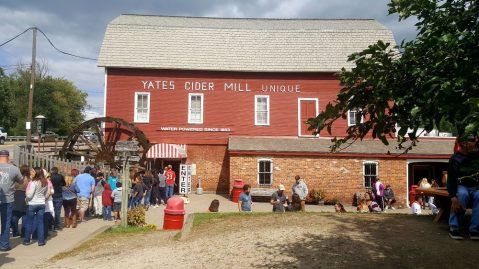10 Places To Explore On Belle Isle That Will Make You Fall In Love With Detroit's Hidden Gem
For locals, Belle Isle is the place to be for hosting family reunions, playing sports in the athletic field, kayaking, or cycling around the 982-acre island. As enjoyable as these activities are, there is so much more to Detroit’s Hidden Gem. Belle Isle’s has an extensive history; in the 1600’s, it was known as Hog Island. Prior to the French settlers, who used the land for their own purposes, it was inhabited by members of native American tribes.
It was given the name “Belle” in the 1700’s, when Antoine de la Mothe, Sieur de Cadillac, the founder of Detroit, named it after his daughter, Isabelle. The city of Detroit purchased the island in 1879 and it became a municipal park in 1882. As of 2016, the park is still owned by the city, on a 30-year lease with the Michigan Department of Natural Resources to maintain and care for the park. The Michigan DNR and Belle Isle Conservancy, a nonprofit organization, have collaborated to protect and preserve this most valuable part of Detroit’s history.

One of the best parts about visiting is that all of the attractions are free of charge. The only cost comes from the purchase of a recreational passport. As a resident of Michigan, the $11 passport will give you access not only to the park, but all of Michigan’s state parks. If you decide to visit, make sure to plan for an entire day. Don't forget to bring food and water; there are no restaurants on the island.

Today, the statue of Mr. Scott faces the fountain, perhaps keeping a watchful eye on it to make sure it never has to be turned off again. In 2011, it was shut down for three years due to vandalism and the city’s insolvency. It was refurbished and began running again in 2014. If you want to see it in all of its glory, the fountain flows between June 11 - September 20, from 10 am to 9 pm.
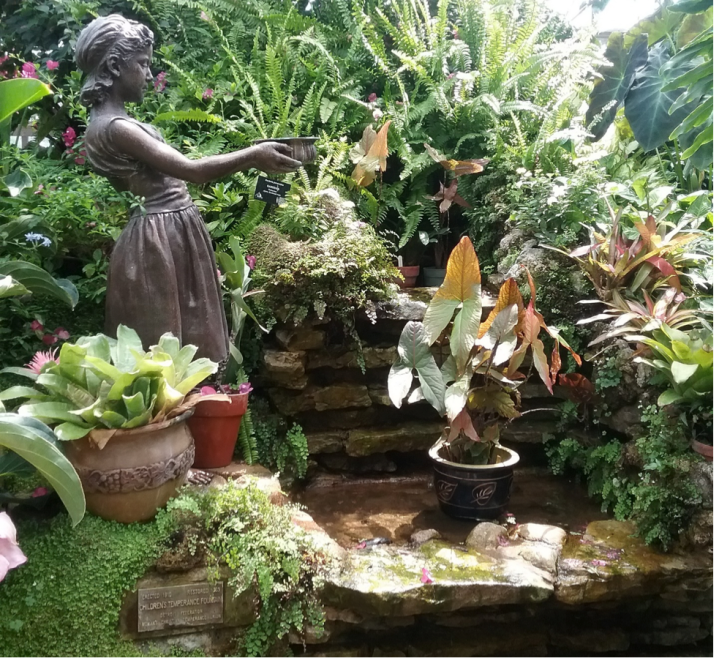
As stunning as it is from the outside, the botanical gardens inside are even more incredible. Featuring species of flowers and plants from around the world, there is a tropical flower room, a cactus room, and various other rooms. The palm trees in the main room reach the glass ceiling dome, which is approximately 85 feet high. Inside the tropical flower room is the Children’s Temperance Fountain, which was erected in 1910 and restored in 1963. The fountain’s history dates back to prohibition times when "temperance" was considered a virtue by abstaining from alcohol. Today, people visit to see the various plant species, but also hold weddings in the spectacular garden in front of the building.

Frederick Marshall seized this opportunity by entering a cast sculpture – now one of his most renowned pieces – of a wheeling gazelle. It was his first commissioned piece, which led to his increased popularity as a sculptor. Today, Marshall’s work can be found across the United States and Europe. The fountain is located in the courtyard/rose gardens of the Anna Scripps Whitcomb Conservatory.
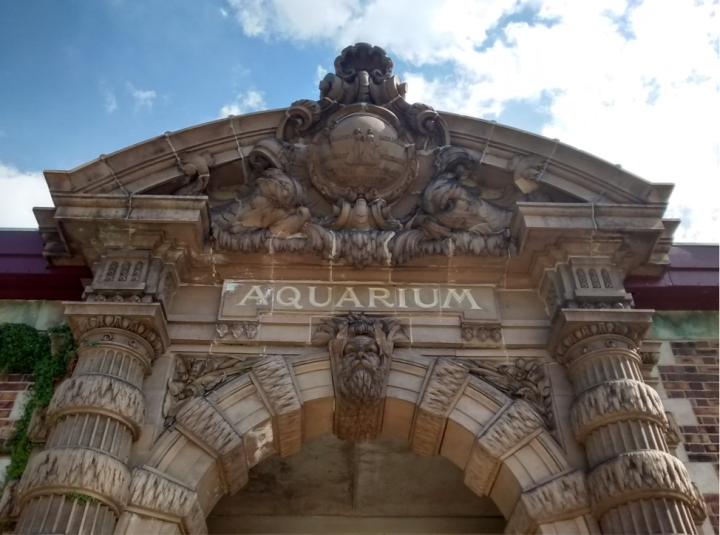
The ceiling of the aquarium is set with Italian-inspired Opaline glass tiles, which gives the illusion of being under the sea. In its inception, the tiles of the Detroit aquarium stretched to the ground floor; however, renovations in the 1950’s changed the style that you will see today. Many original pieces are still available for viewing throughout the historic building. One notable aspect is the skylights, which have been refurbished, yet still retain their initial power-source – humans using an old pulley system.
The aquarium closed in 2005 due to lack of funding, along with other issues. At the time, all of the fish, except the koi, found other homes. Fortunately, there has been a revamping of this historical piece of Detroit; with the help of devoted volunteers, it re-opened in 2012. These days, the aquarium sees two to three thousand visitors each weekend. Visiting hours are Friday, Saturday, and Sunday, 10 am – 4pm between Memorial Day and Labor Day.
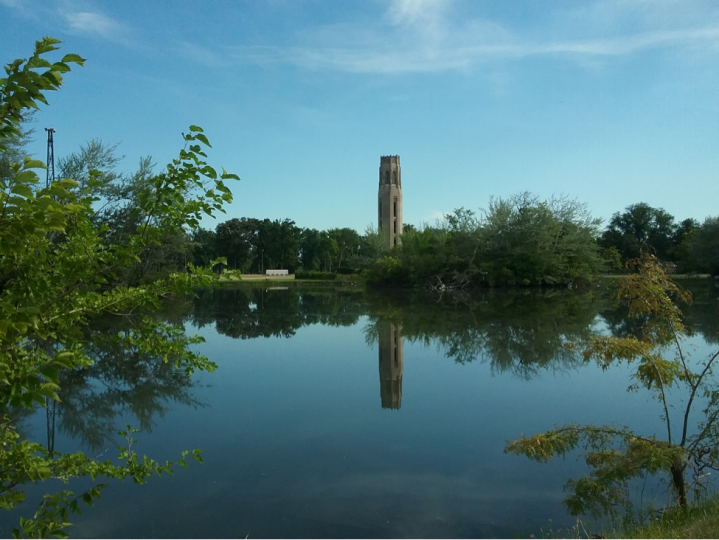
This monument is one of the first examples of crowd-funding used to achieve a goal. Overall, an estimated 60,000 people donated small sums of money in an effort to build the musical tower. When it was finally unveiled in 1940, there were an estimated 100,000 people present to witness, who attended alongside the Detroit city police. Like the aquarium and the James Scott Fountain, vandals took advantage of this magnificent structure and it sat in silence for years; however, the original bells have been replaced and it now plays a computer-generated song for all to enjoy every half hour.
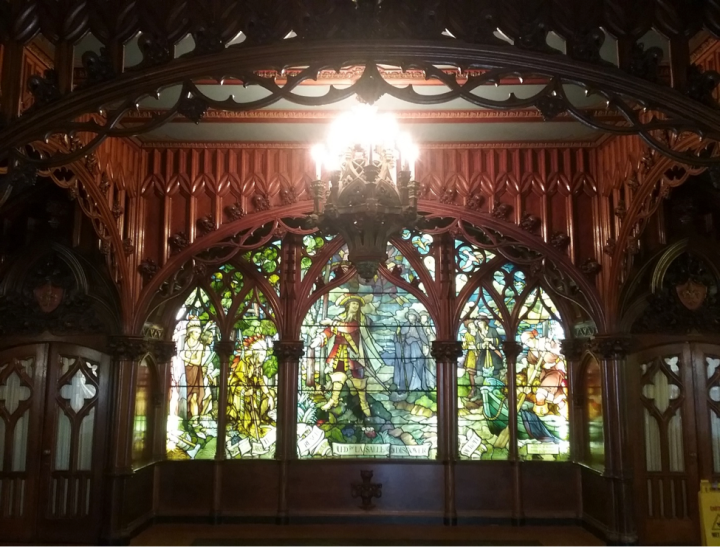
The museum features a viewing deck that looks out onto the water and faces Canada. The deck is known as the William K. Ford Pilot House; it was originally part of the S.S. William Ford, a freighter that was scrapped in 1987. Below the deck, you can view through the periscope and learn about the story of the Edmund Fitzgerald, which sunk in 1975. The anchor of the Edmund Fitzgerald tells its story out front, along with a retired U.S. Coast Guard boat that appears to have been docked there many years ago. Notable pieces of artwork and Native American artifacts are also must-sees when touring this unique maritime museum.
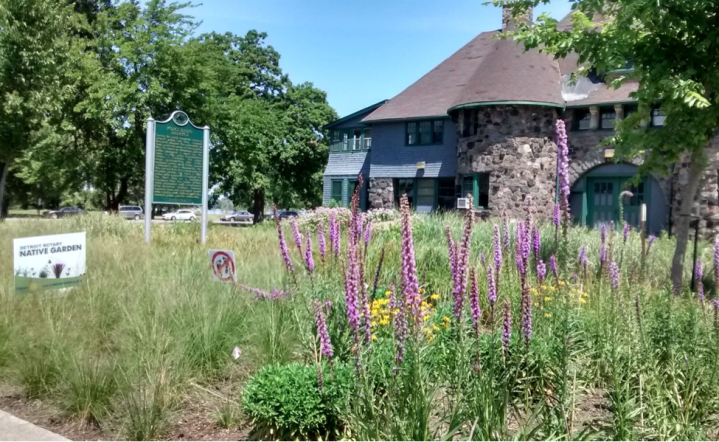
Though out of commission, this spot has earned a renowned spot in history. The historical placard attached to the building reads:
Electrical Engineering Milestone
One-Way Police Radio Communication
At this site on 7 April, 1923, the Detroit Police Department commenced regular one-way radio communication with its patrol cars developed by personnel of the department’s radio bureau. The system was the product of seven years of experimentation under the direction of police commissioner William P. Rutledge. Their work proved the practicality of band-mobile radio for police work and led to its adoption throughout the country.
May 1937

Named after William Livingstone, another well-known and contributory member of the city in the late 19th and early 20th centuries, the lighthouse now stands at the northeast side of the island. It reaches nearly five stories in height and is formed out of white marble. It continues to light every five minutes or so for any boats that happen to be passing by. It is only one of a handful of marble lighthouses in the world. There is no road that will take you to see it, but there is a half-mile walking path from the U.S. Coast Guard station near Lake Okanaka.

The updated zoo features a walking trail, a butterfly garden, an active honeybee hive, and a viewing window for watching local and migratory birds. Other indoor animals include several species of turtles, fish, and snakes. It is a popular halfway destination for bicyclists on the island who meet regularly on Saturdays during the summer.
During certain times of the day, there is a deer encounter, where guests can feed these creatures that once roamed the island. For bibliophiles, there is a take-a-book/leave-a-book post located in front of the center. For the scientifically-minded, exhibits on display allow visitors to examine specimens through a microscope and check out life-sized casts of the different native animals of Belle Isle. The zoo is also involved in the study of the invasive species that have taken over many parts of the island and the Great Lakes region.
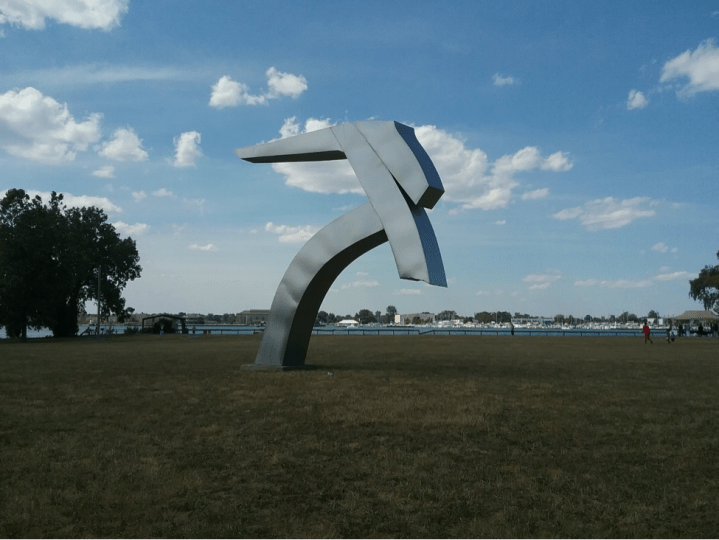
The most impressive part of this sculpture is that it is supported entirely by its base, which is grounded in concrete and surrounded by a large field. The balance of the creation had to be structured in such a way that it would not be too heavy in any one direction, otherwise it would collapse to the ground. There is a parking lot positioned relatively close to the sculpture, so it only takes but a minute or two to get up close and personal with this public work of art.
There are many more special spots to be discovered on Belle Isle, this guide simply gives you the basics. All of these – and more – prove that this lovely little island is a hidden gem in Detroit. Have a wonderful time!
OnlyInYourState may earn compensation through affiliate links in this article. As an Amazon Associate, we earn from qualifying purchases.




